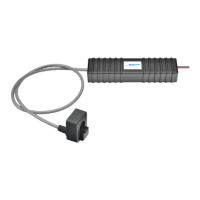14
Curtis 1030 Acuity Manual, Rev. C
node address is part of the COB-ID and therefore also plays a part in message
priority and bus arbitration.
Changes to the node address require an NMT reset or power-cycle.
Standard message identiers
The Acuity will produce—and respond to—the standard message types with
the following CANopen identifiers.
Message Type Message Identier
NMT 0000 – 00hXx
EMERGENCY 0001 – 01hXx
PDO-MISO 0011 – 03hXx
PDO-MOSI 0100 – 04hXx
SDO-MISO 1011 – 0BhXx
SDO-MOSI 1100 – 0ChXx
HEARTBEAT 1110 – 0EhXx
The 11-bit identification field is a fixed part of the CANopen specification
called the Communication OBject IDentification (COB-ID). This field is used
for arbitration on the bus. The COB-ID with the lowest value gets priority and
wins arbitration. Consequently, NMT messages have the highest priority of the
standard message types, and the heartbeat has the lowest priority.
The standard organization of the COB-ID puts the message type in the
upper four bits, and the Node ID in the bottom seven bits:
11 10 9 8 7 6 5 4 3 2 1
Message Type Node ID
NMT messages
NMT (Network Management Transmission) messages are the highest priority
message available. The NMT message puts the Acuity into one of the four
defined states. These messages have 1 byte of data sent by the master; the slave
does not respond with any data to an NMT. The Acuity state value is trans-
mitted with each heartbeat message.
Value State
00h Initialization (or “boot-up”)
04h StoppedXx
05h OperationalXx
7Fh Pre-OperationalXx
4 — CANopen COMMUNICATIONS

